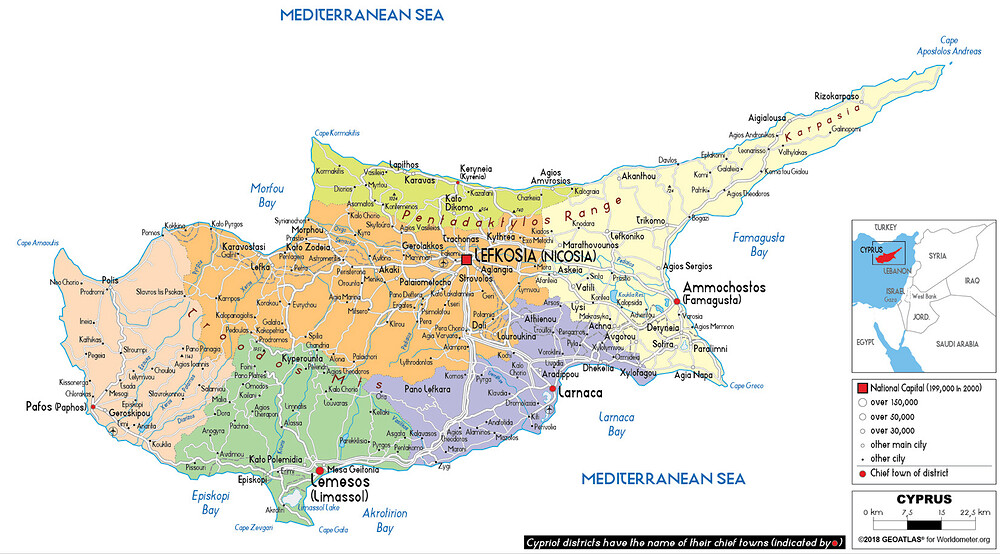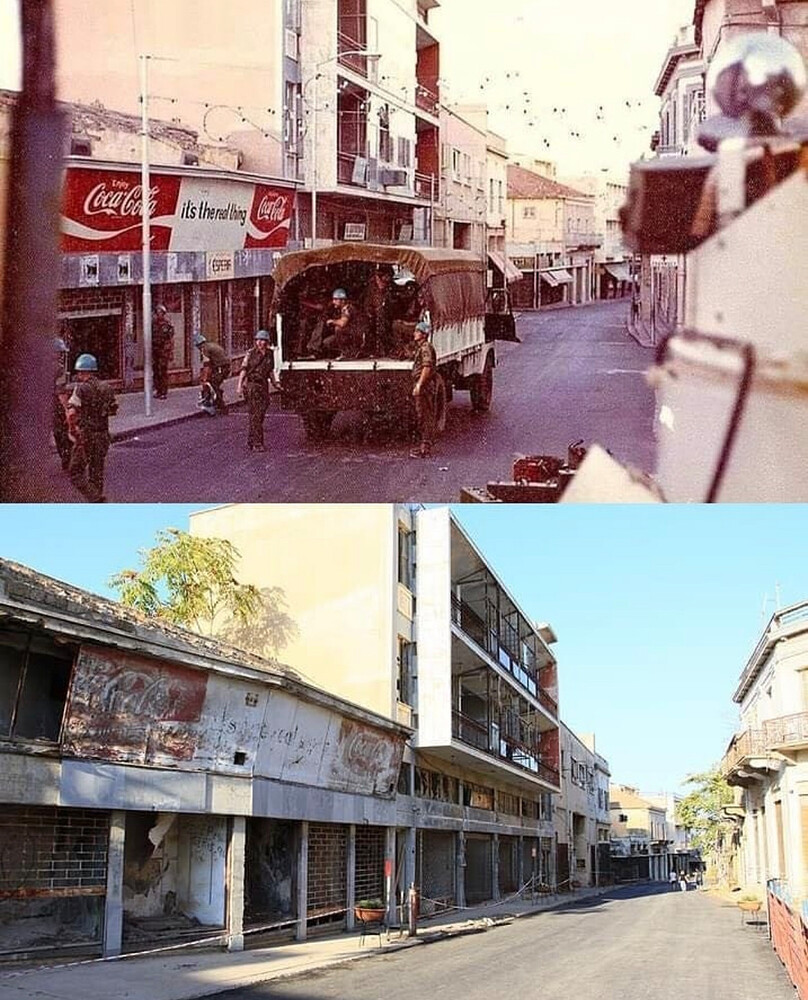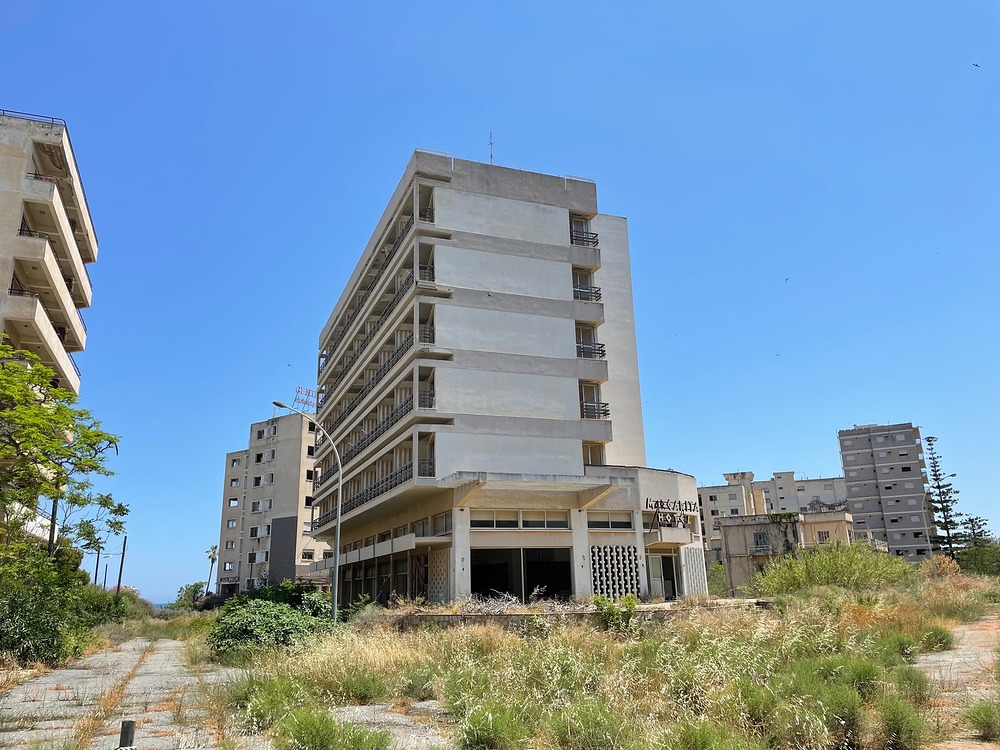[Would you like to see Varosha in-game?]
Varosha, Cyprus
Varosha, a district of Famagusta in Cyprus, was once a bustling Mediterranean resort town. Notable figures such as Elizabeth Taylor, Richard Burton, Raquel Welch, Brigitte Bardot, and Paul Newman were among the distinguished guests who vacationed there. The luxurious Argo Hotel was reportedly a favorite of Elizabeth Taylor. This influx of high-profile visitors earned Varosha the nickname the “Saint Tropez of Cyprus.” The town’s pristine beaches, upscale hotels, and vibrant nightlife made it a sought-after destination for the international elite during its heyday.
The 1974 conflict on Cyprus turned it into a silent, abandoned shell of its former self. The area has remained frozen in time ever since, surrounded by fences and patrolled by the Turkish military. Its empty streets and decaying buildings offer a haunting glimpse into the past, making it a powerful and unique setting for a War Thunder map.
Geographic Location:
Spoiler
Varosha is situated on the southeastern edge of Famagusta, along the eastern coast of Cyprus, facing the Mediterranean Sea. It lies on relatively flat terrain just inland from a wide, sandy shoreline, with the Mesaoria Plain stretching to the west, an expansive, open landscape that historically served as a key route between central and eastern Cyprus. To the north, Varosha borders the fortified old city of Famagusta, while to the south and southwest it transitions into agricultural land and scattered settlements. The area is part of a naturally low-lying coastal zone, with limited elevation but clear lines of sight in many directions, making it tactically significant in any military movement along the eastern seaboard. Its location near the island’s narrow waist also placed it within strategic reach of both Nicosia to the northwest and Larnaka to the southwest, linking it to major military and logistical corridors during the 1974 conflict.
Historical Background:
Spoiler
In July 1974, following a coup backed by the Greek military junta, Turkey launched Operation Atilla, a military intervention on Cyprus. The Turkish Armed Forces landed along the northern coast and pushed southward, rapidly capturing territory. Famagusta, located on the eastern coast of Cyprus, held strategic importance due to its deep-water port and economic value.
Turkish forces advanced toward the city from the north, encountering resistance from Greek Cypriot National Guard units and irregular fighters. Skirmishes broke out on the outskirts and in the suburbs, particularly around Prastio, Salamis, and the Mesaoria plain. Despite determined efforts, Greek Cypriot forces were often outgunned, largely due to Turkish air and armored superiority. The Varosha district, saw no major military defense or prolonged combat. However, evidence of fighting still remains, with bullet-riddled buildings and combat damaged infrastructure. As Turkish forces approached, most residents and defenders evacuated, fearing encirclement or bombardment.
Greek Cypriot forces had deployed three T-34-85 tanks and four Marmon-Herrington MK IVF armored cars in the Famagusta–Varosha area, all of which were either destroyed in skirmishes or abandoned during the retreat. Units from the First Anti-Tank Detachment (I ATD) reportedly withdrew from the city in a state of panic, retreating toward Larnaka. When Turkish troops entered Varosha on August 14–15, they found the area largely abandoned.
Varosha was subsequently fenced off and placed under Turkish military control. It was sealed, deserted, and frozen in time. For nearly half a century, entry was strictly prohibited, with the area left to decay. Turkish soldiers were ordered to shoot anyone in sight. The district became a haunting symbol of the division of Cyprus, visible from the rest of Famagusta but inaccessible, with its crumbling buildings and empty streets serving as a stark reminder of the conflict.
In recent years, however, the status of Varosha has begun to shift. In 2020, the Turkish and Turkish Cypriot authorities initiated efforts to reopen parts of the area to the public. Some roads have been cleared, infrastructure partially restored, and selected sections reopened as a kind of open-air museum. While still under military control, visitors can now walk through limited zones under supervision, offering a glimpse into the eerie, time-locked remains of a city that once thrived. The move has sparked international debate and concern, as the reopening is considered controversial and politically sensitive, particularly by the Republic of Cyprus and the international community.
Why Varosha Would Work in War Thunder:
Spoiler
- Urban Warfare: The dense layout of Varosha, with high-rise hotels, wide highstreets, and partially destroyed buildings, is ideal for tank combat and close-quarters ground engagements.
- Historical Combat Setting: The 1974 conflict saw tanks like the M47 Patton, M48, and T-34-85 in action.
- Aerial Combat: The airspace over the island saw action from aircraft such as the F-100D/F Super Sabre and UH-1H Huey.
- Atmospheric Design: The eerie, abandoned aesthetic of Varosha: Overgrown streets, bullet-riddled buildings, abandoned construction sites, and rusting cars offers a visually unique experience.
Potential Map Layout:
Spoiler
The map could feature:
- A historic Venetian-era fort/Old City, built in the 15th and 16th centuries when the city was under the rule of the Republic of Venice.
- A central urban zone with hotels, construction sites, and residential blocks.
- A beachfront tourist zone for long range combat and risky flanks.
- Outskirts including small sized abandoned houses, open fields, olive groves, dry terrain, and shallow hills, ideal for longer-range tank duels.
Conclusion:
Spoiler
By including Varosha, War Thunder would gain a map that is not only strategically rich and visually compelling, but also deeply rooted in historical context. The area offers a unique blend of abandoned urban environments, coastal landscapes, and Cold War-era military tension that few other maps can match. Crumbling hotels, empty beachfronts, and overgrown streets provide ideal terrain for intense close-quarters combat. More importantly, the inclusion of Varosha would shine a spotlight on a lesser-known but geopolitically significant chapter of Cold War history, the Cyprus conflict, bringing attention to a region and a conflict that is rarely represented in military games.
Sources:
Spoiler
Mamounidakis, I. (2008). Armor on Cyprus: Evolution and Operations. Trojan Horse.
https://www.baharyayla.com/single-post/2017/03/14/Varosha-A-Story-Between-Fiction-and-Reality
Inside the Cyprus ghost town once loved by celebs before it was left to rot
Varosi (Varosha) | Cyprus Passion
Varosha, Famagusta - Wikipedia
My Personal Gallery:
Spoiler




























